Three days after facing off in a colossal Premier League battle at Stamford Bridge, a struggling Chelsea travel to the Etihad Stadium this weekend to take on the current champions of England in one of the oldest competitions in world football – the FA Cup.
Manchester City, six-time winners of the domestic trophy have arguably struggled in the FA Cup over the past decade, particularly during the Pep Guardiola era. While lifting the crown under the Catalan coach in 2019, City have been eliminated prematurely in five of the previous six seasons despite being overwhelming favourites.
With Arsenal running away with the league title and City stumbling in second, the FA Cup provides Guardiola with a great opportunity to still make it a memorable campaign for the Manchester-based club.
Meanwhile, the FA Cup offers Graham Potter the chance to win his first trophy in English football while helping to ease the pressure off his back after some turbulent results recently.
The magic of the cup alludes to the mind-blowing feeling that supporters feel when David trumps Goliath but sometimes it’s still fun to watch two Goliaths of the football world lock horns.
Whoever wins this bout has knocked out a serious contender for the title and so all eyes will be watching this Sunday.
City have already been victorious in a cup competition against Chelsea this season, throwing the Londoners out on their backside with a 2-0 win in the Carabao Cup back in November. Again, on Thursday, Guardiola’s men were triumphant at the Bridge, winning 1-0 to take a step closer to the summit.
In this tactical analysis piece, we will tactically preview the game between City and Chelsea, looking at the tactics expected from both sides and how the Blues can nullify Guardiola’s well-oiled machine.
Formations and lineups
When it comes to predicting formations, it’s much easier to take an educated guess on the shape that Guardiola will deploy in contrast to his counterpart in the opposite dugout.
Guardiola has rarely diverted from using a 4-3-3 throughout his entire managerial career. There have been certain times where the 4-2-3-1 has been preferential for the two-time UEFA Champions League winning coach as well as a back three on occasion but the 4-3-3 has remained just as constant as his possession-oriented philosophy.
Nonetheless, the 4-3-3 works merely as a base to quantify the starting positions of his players. Particularly when City are on the ball, the players move around into different areas of the pitch and so the 4-3-3 becomes anything but.
Nonetheless, as a base, it is likely that the Cityzens will line out in their usual formation for this massive FA Cup clash as it has been a constant for the Premier League champions yet again this season.
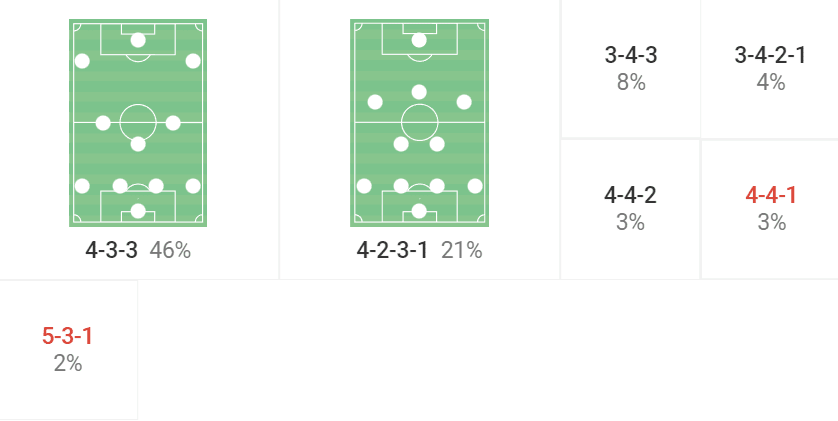
The key component of Guardiola’s starting lineup to watch out for is who will start in the fullback slots. There has been a pattern to the former Barcelona boss’ thought process over the past few games.
Usually, Guardiola picks a conventional centre-back to start on one side of the defence. This has either been John Stones as a right-back or else Nathan Ake on the left.
If Stones gets the nod, Joao Cancelo will be deployed as a left-back, with the Portuguese fullback tasked with inverting behind the opposition’s first line of pressure. However, if Ake begins at left-back, we’ll likely see youngster Rico Lewis on the opposite flank, operating in a similar role to Cancelo but on the right instead.
Since the restart, following the FIFA World Cup, Guardiola has put a lot of faith into Lewis, and this has been repaid with some excellent performances in a blue kit. From Lewis’ heatmap, we can see that he carries out the inverted fullback role perfectly for Pep.
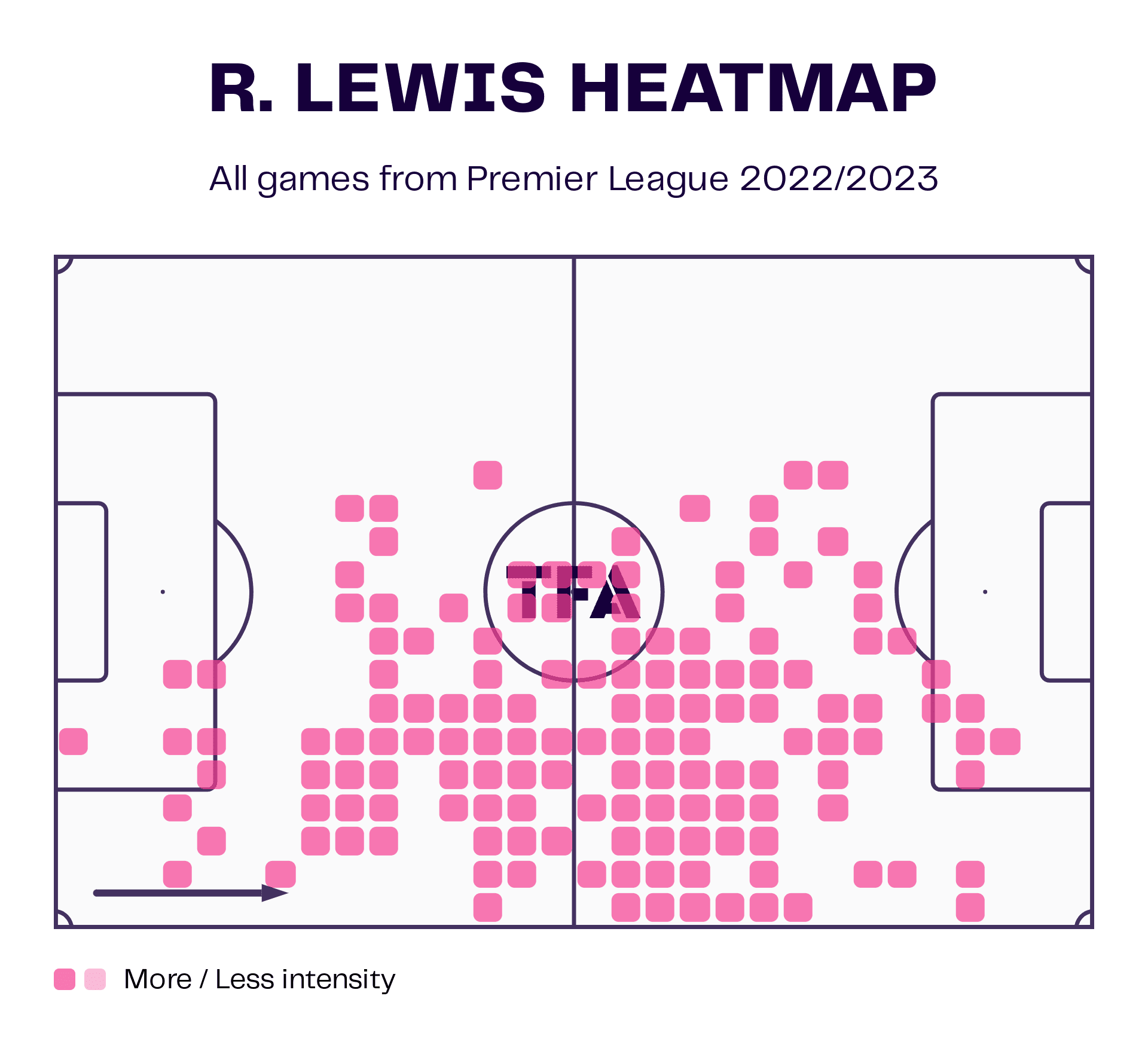
There is also a possibility that Kyle Walker gets the go-ahead from his manager but since the ex-Spurs defender is better tucking inside as an extra centre-back or pushing far up the wings, Cancelo will need to also be in the team for City since Guardiola always wants one of his fullbacks to invert into the pivot space.
It’s difficult to predict exactly which of the three combinations Guardiola chooses but it could be a deciding factor in this one.
Regarding Chelsea, Potter’s side are far more unpredictable tactically than Man City. Where Guardiola is an adamant advocate for the 4-3-3, the ex-Brighton boss has built his reputation on being structurally ambiguous while maintaining the same principles within each formation.
Going off the data from this season, it’s anyone’s guess as to which shape Potter will go with against City in this clash.
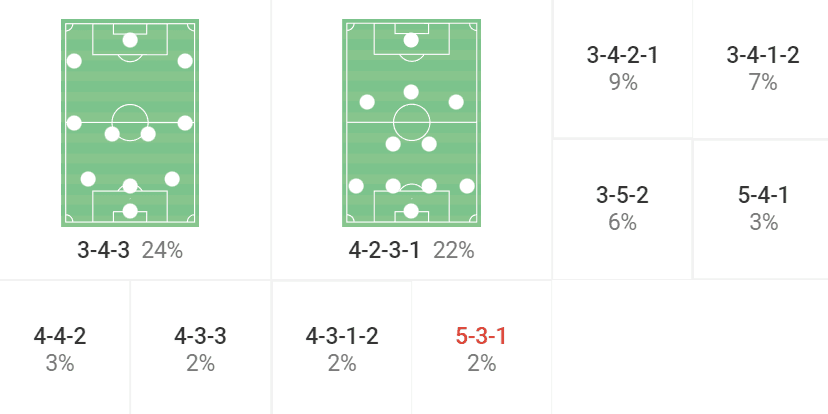
Since the return of the Premier League last week, Chelsea have set up in a 4-2-3-1 which saw great success against Bournemouth but failed in the 1-1 draw with Nottingham Forest and in the 1-0 home defeat to Manchester City on Thursday.
Before the World Cup, the Blues had been utilising a 3-4-2-1 which dropped into a 5-4-1 defensively but Chelsea had lost to both Newcastle United in the league and Manchester City in the Carabao Cup and so didn’t see much success with this structure either.
Ultimately, it doesn’t seem to be the formation that is causing Chelsea to drop points left, right and centre, but instead the lack of energy within the side and the failure to execute the coach’s principles. This is Potter’s issue to rectify.
With Mateo Kovacic back in the squad after returning from injury, the Croat needs to be in the starting eleven against City to add much-needed energy against players like Kevin de Bruyne, Bernardo Silva and Ilkay Gundogan.
The ground that the midfielder covers is astronomical, while also offering progressive carries in the middle of the park to bypass pressure from the opposition, taking the ball forward for Chelsea.
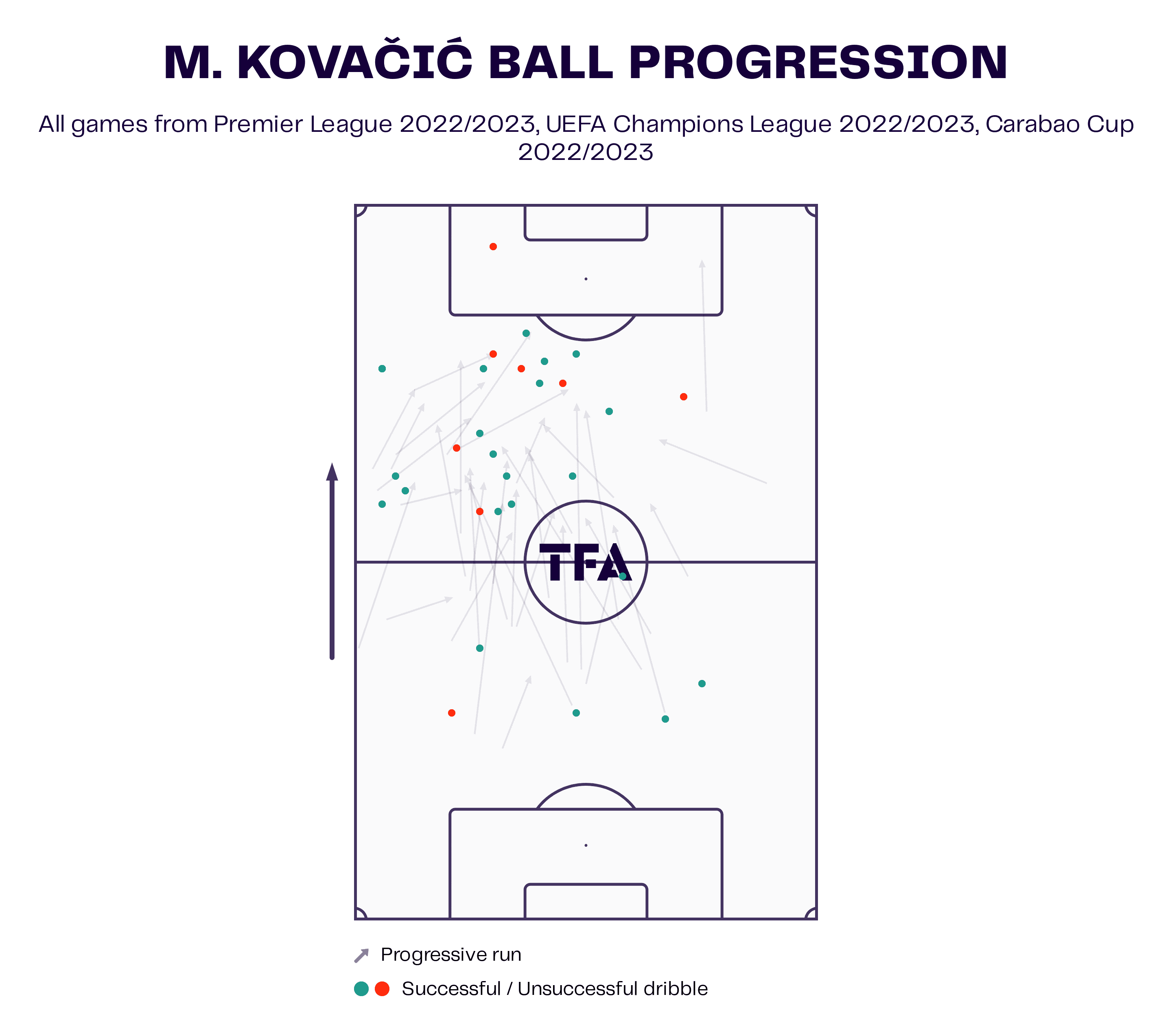
It is highly probable that Kovacic will partner Jorginho in a double-pivot but whether this is inside a 4-2-3-1 or a 3-4-2-1 will be seen on the day.
Learning lessons from a former boss
With massive pressure on his shoulders, Frank Lampard went to the Etihad last Saturday and took a point back to Merseyside against his former club.
Everton defended really well throughout the game and while City were unfortunate not to pick up all three points, it was still an extremely hard-fought draw by the Liverpool-based club.
One of the keys to the Toffees’ solid defensive display was their set-up out of possession. Lampard didn’t bother pressing City high up the pitch as it would have been a mismatch of quality.
Instead, Everton dropped off into a 5-3-2 mid-to-low block and remained compact in the middle of the pitch, denying City the opportunity to play to their star attackers between the lines.
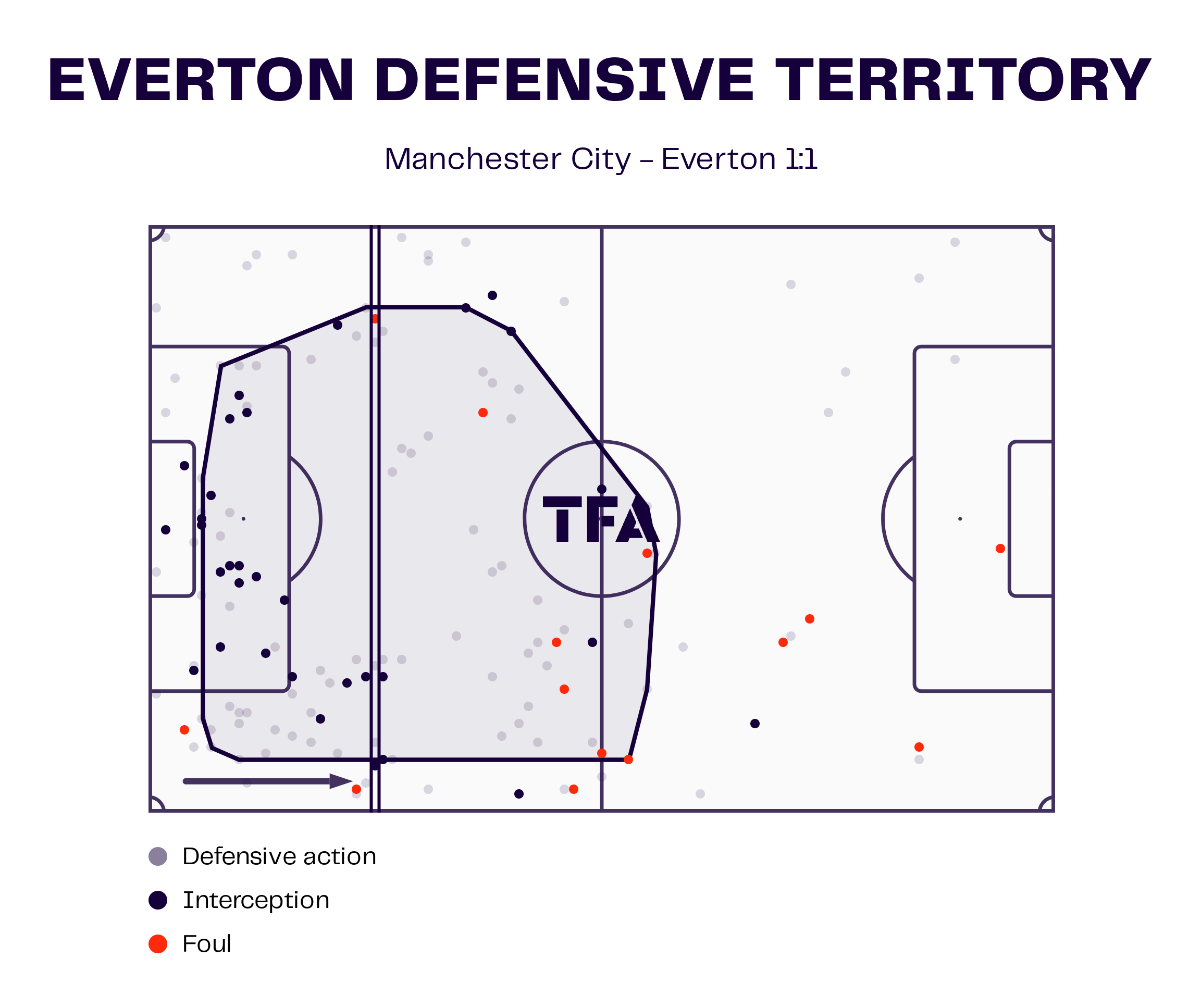
From Everton’s defensive territory map from the 1-1 draw, it is evident just how deep the side’s backline was on average, staying roughly at the edge of the penalty area, with the average area of engagement being well inside their own half.
Lampard has preferred to deploy a 3-4-3 with his Everton team this season, dropping into a 5-4-1 out of possession. However, against City, the ex-Chelsea manager opted to switch to a 5-3-2.
The midfield was particularly vital for the Toffees to deny the Premier League champions the opportunity to break down their block. This was because, when a gap opened up in the defensive line, the wide central midfielders in the middle of the park would drop in to mark any underlapping runs.
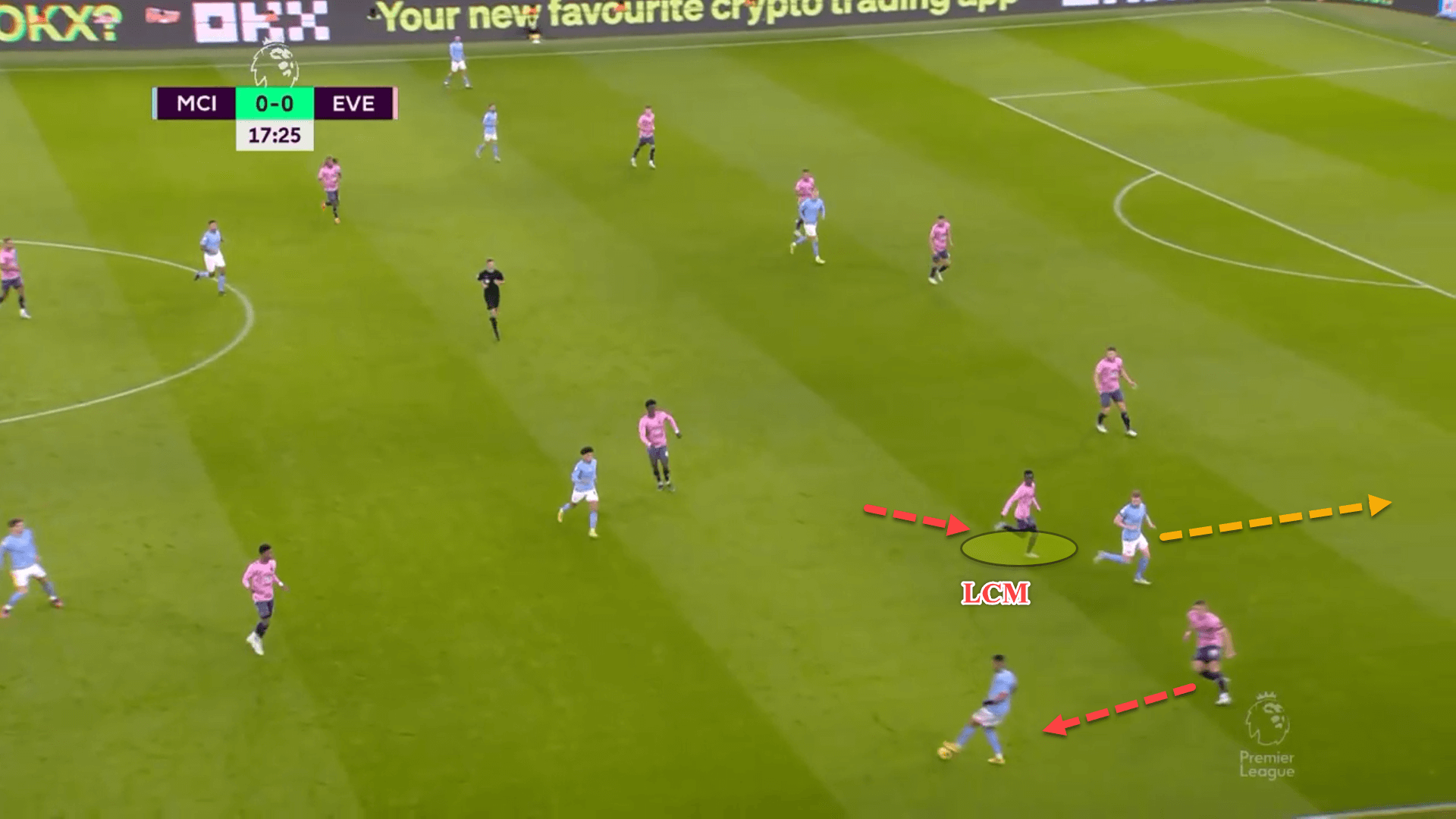
City love to create separations between the opposition’s nearest centre-back and wingback/fullback. This allows their number ‘8s’, or advanced central midfielders as they are often called, to make underlapping runs in the halfspaces to get into excellent crossing positions.
It was important that Everton’s midfield worked hard to track runners when these situations arose to cut off this possibility, as Idrissa Gueye did really well in the previous image.
If Guardiola’s team can get themselves into the halfspaces with runs between the fullback and centre-back, players such as Bernardo Silva, Kevin de Bruyne, Phil Foden and Jack Grealish can wreak havoc.
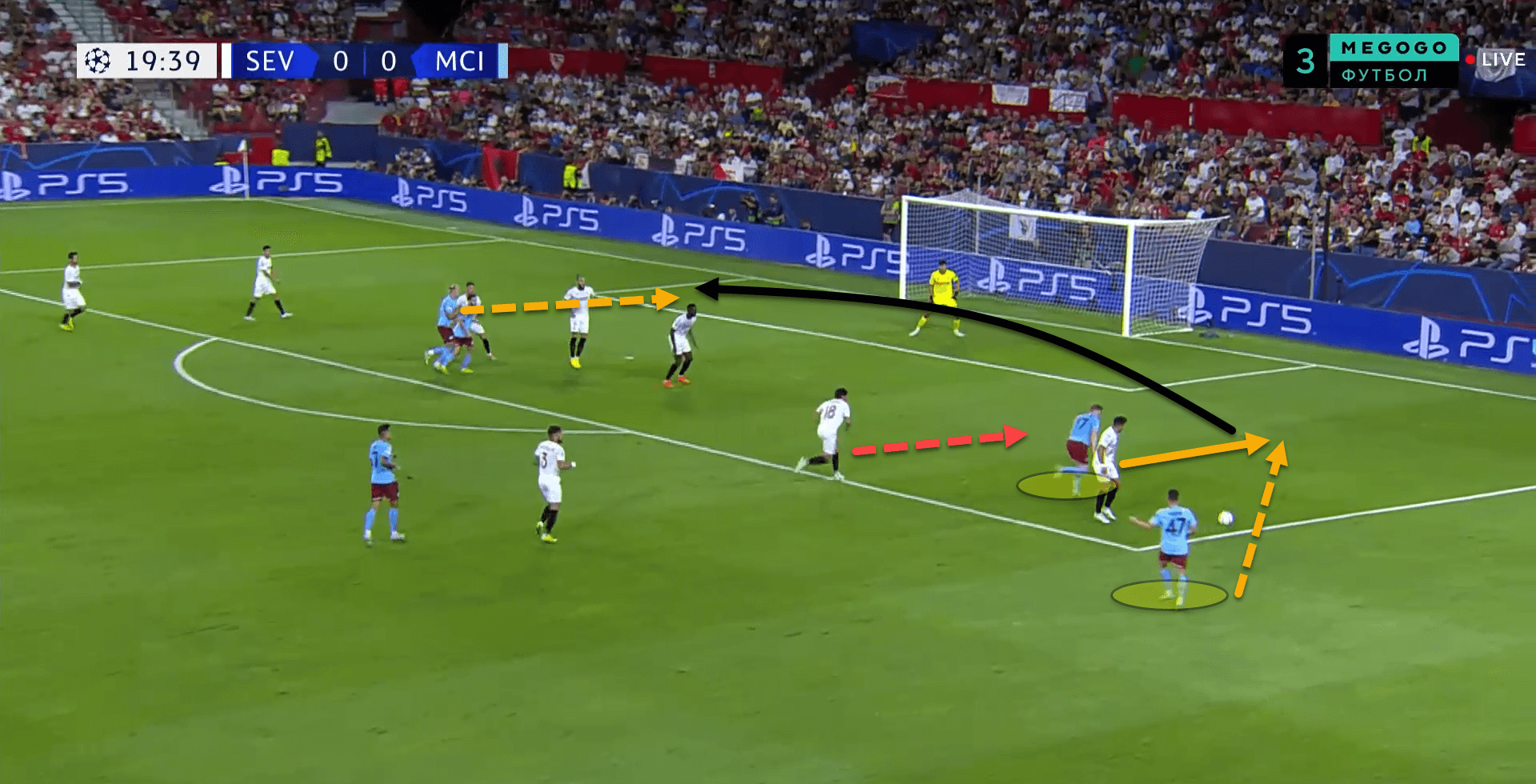
Here, City have created a separation between Sevilla’s left-back and left centre-back. Spotting the gap, de Bruyne makes a darting run into the space and receives the ball in behind from Foden.
Sevilla’s nearest central midfielder doesn’t react quickly enough and so the Belgian playmaker smashes it across the face of goal for none other than Erling Haaland to poke home.
As it is a prerequisite for how Man City play under Pep, Chelsea need to deal with these underlapping runs, taking a page from their former manager Lampard’s book on how to stifle the team’s attacking threat from these scenarios.
In the Carabao Cup game back in November, City were able to create numerous chances from crosses and cutbacks in the halfspaces because Chelsea’s midfield was not plugging gaps well enough.
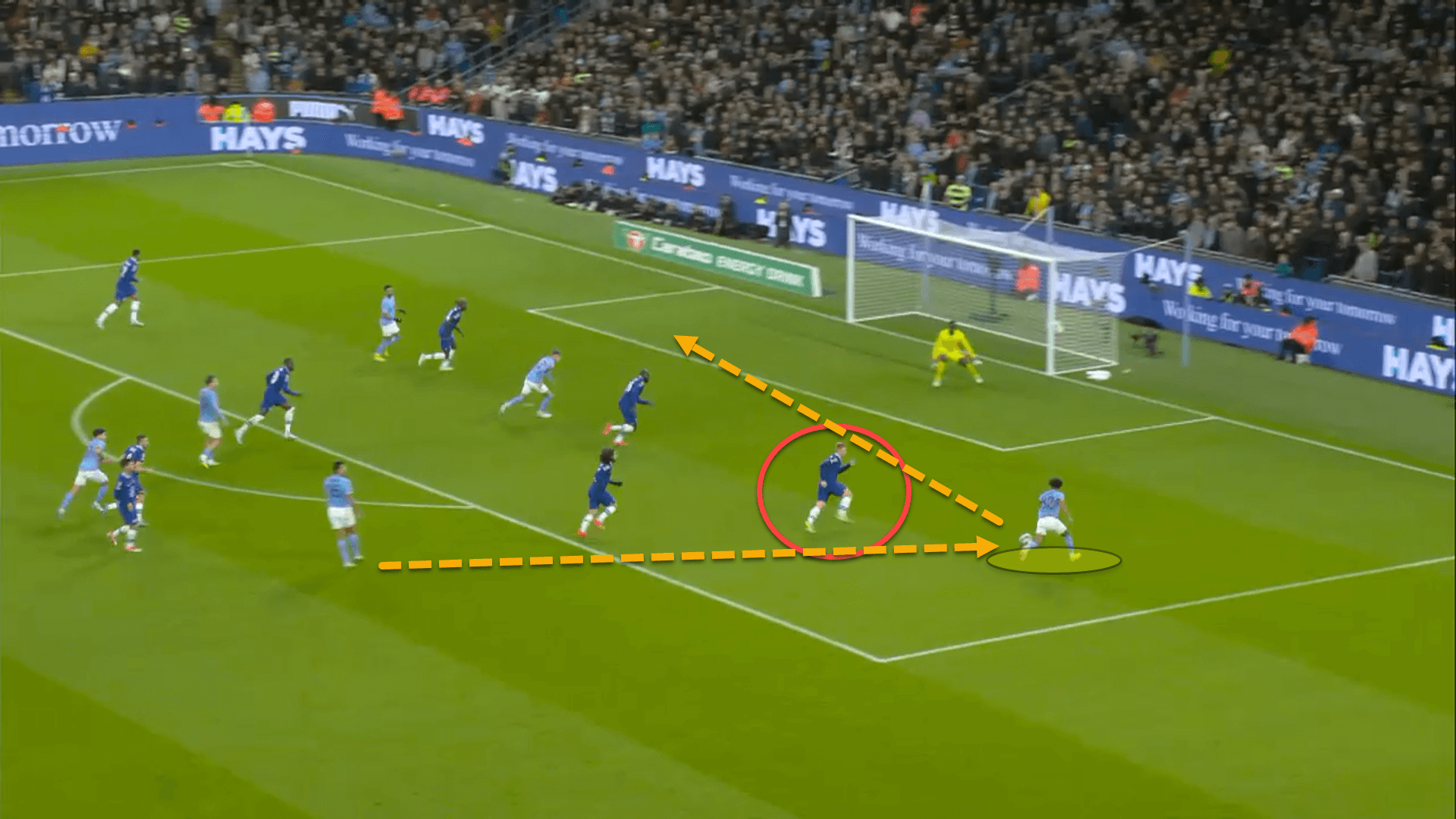
Since the Blues defended in a 5-4-1 and there were only two central midfielders, the wingers were tasked with dropping to the defensive line and creating a temporary six-man defence to make sure there was cover in the halfspaces.
Nonetheless, Christian Pulisic in particular was not tracking back enough, leaving Lewis Hall constantly exposed to runs in behind from Rico Lewis, as shown above.
A 5-3-2 suits defending against City’s halfspace threat more than a 5-4-1 and so perhaps a switch to the Lampard-inspired system may be best for Potter’s men, using Jorginho as the ‘6’, with Dennis Zakaria and Kovacic tracking the underlapping runs in the halfspaces when gaps open up in the back five.
Chelsea’s pressing issues
As with any side that face Manchester City, Potter will need to weigh up the benefits and drawbacks of pressing the Cityzens high up the pitch, trying to win the ball back as close to the goal as possible.
In the 2-0 defeat to City in the Carabao Cup a few weeks ago, the Chelsea boss instructed his players to press their opponents in the final third in a 3-4-3/3-4-1-2 depending on whether Armando Broja, the Blues’ striker, was sitting off on Rodri or pressing the goalkeeper.
Normally, the Albanian pressed City’s keeper, creating a 3-4-3 with Chelsea going man-to-man in the final third, trying to match the league champions player-for-player in their high block.
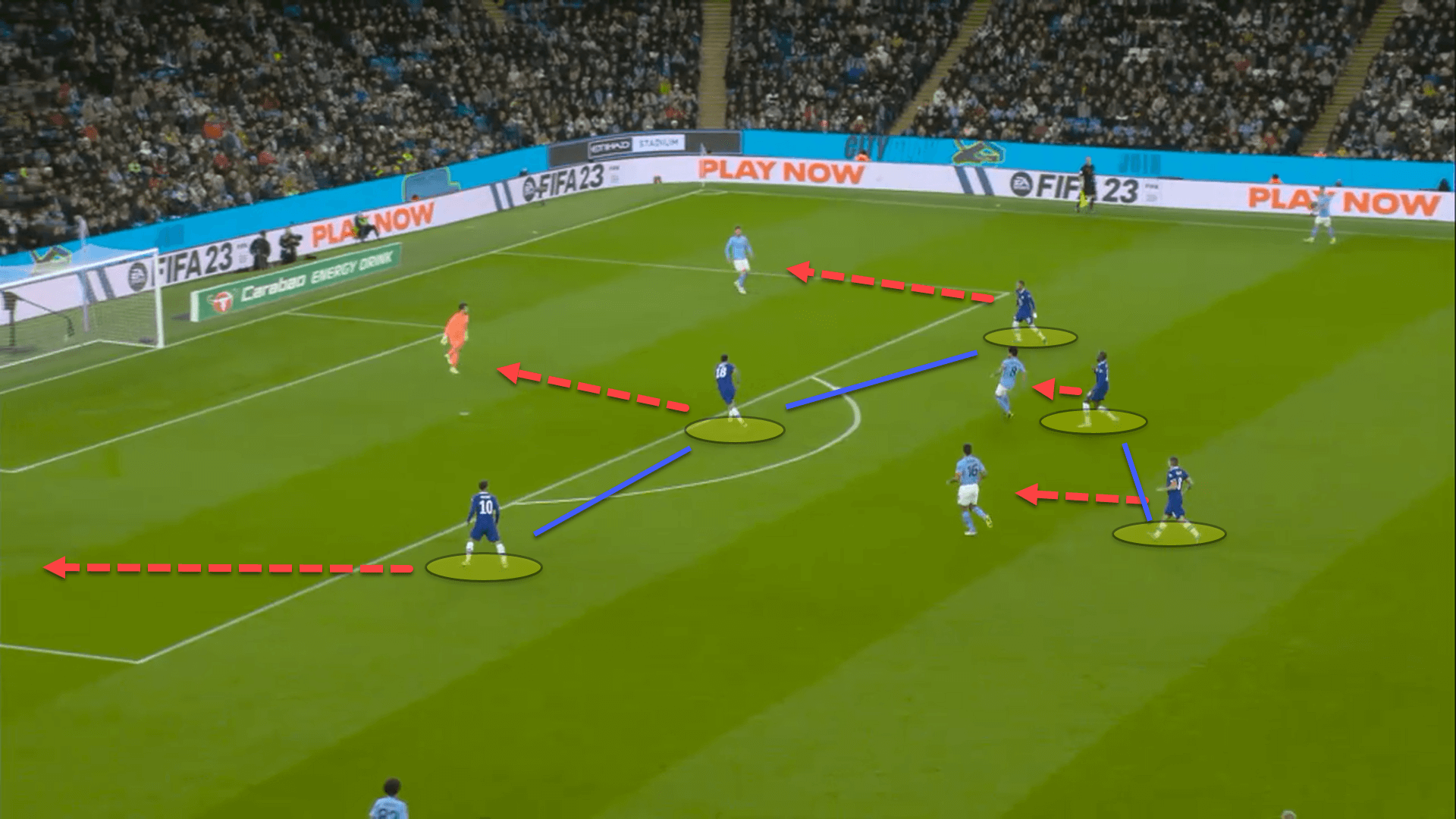
The primary issue that the visitors faced was one that was incredibly obvious – Man City are the best side in world football at passing it out from their own penalty area and progressing higher up the pitch.
It was an incorrect decision by Potter, especially choosing to commit so many bodies forward in the press.
Since the double-pivot and the wingers would push so high to mark their men, the nearest centre-back would step way out of line and man-mark one of the City forwards who dropped deep to receive, leaving just two centre-backs on the halfway line.
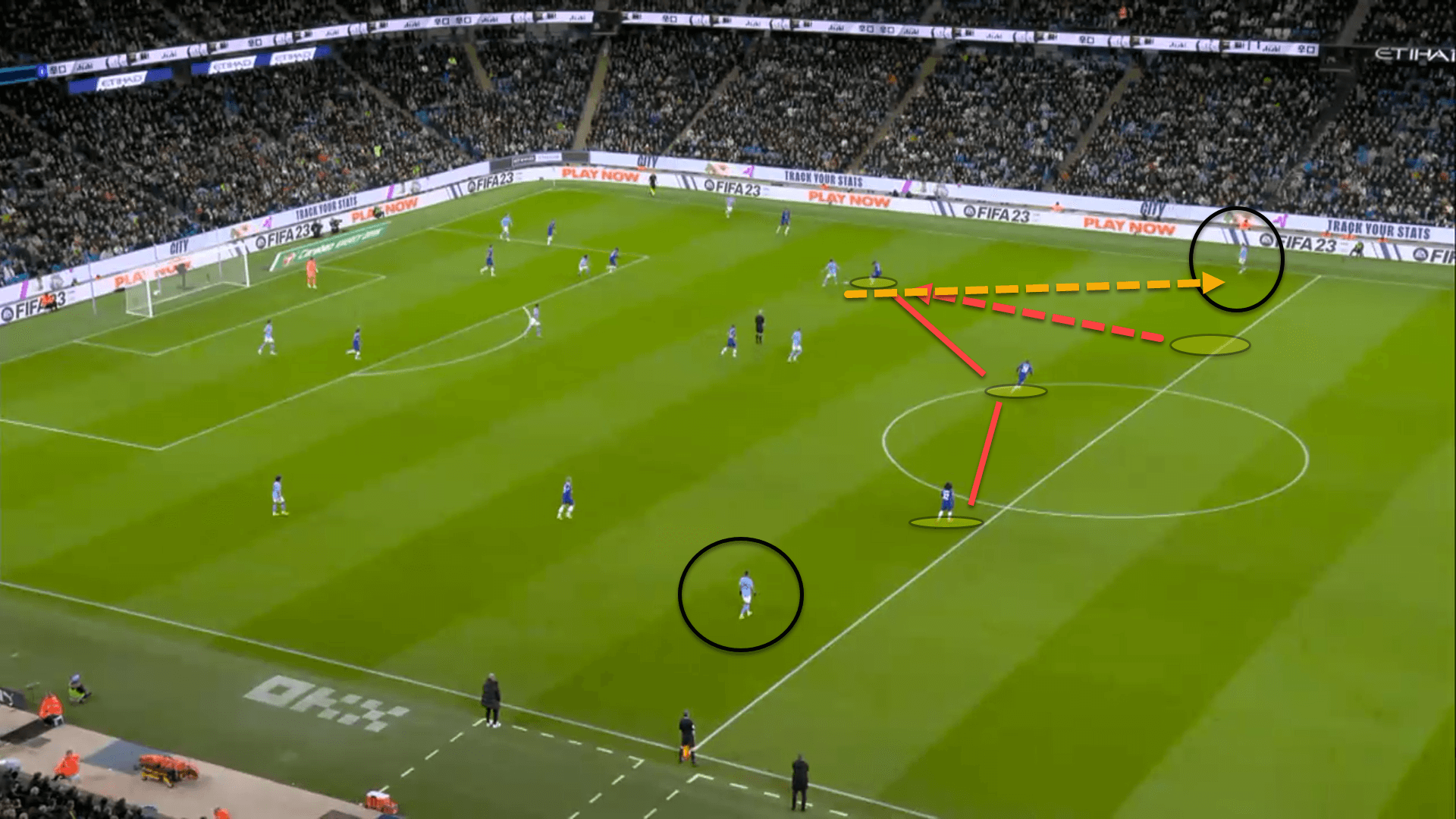
City played intelligently versus this set-up. Here, Julian Alvarez dropped very deep to receive the ball from the first third, knowing that Trevor Chalobah would follow him. Jack Grealish stayed wide on the left while Riyad Mahrez held the width on the right.
With Chalobah out of position, Grealish and Mahrez had a 2v2 situation against Kalidou Koulibaly and Marc Cucurella, stretching the two centre-backs. From there, City were able to create an excellent goalscoring opportunity which almost led to a goal.
Chelsea are much better off sitting in a compact mid-block in the middle of the pitch, just as they did in the previous cup outing versus the six-time FA Cup champions.
The defensive shape from the Londoners was a 5-4-1, but to avoid allowing City to overload their double-pivot, Chelsea kept their backline very close so that the centre-backs could play aggressively and step up if the two central midfielders were unable to stop the ball reaching an opposition player between the lines.
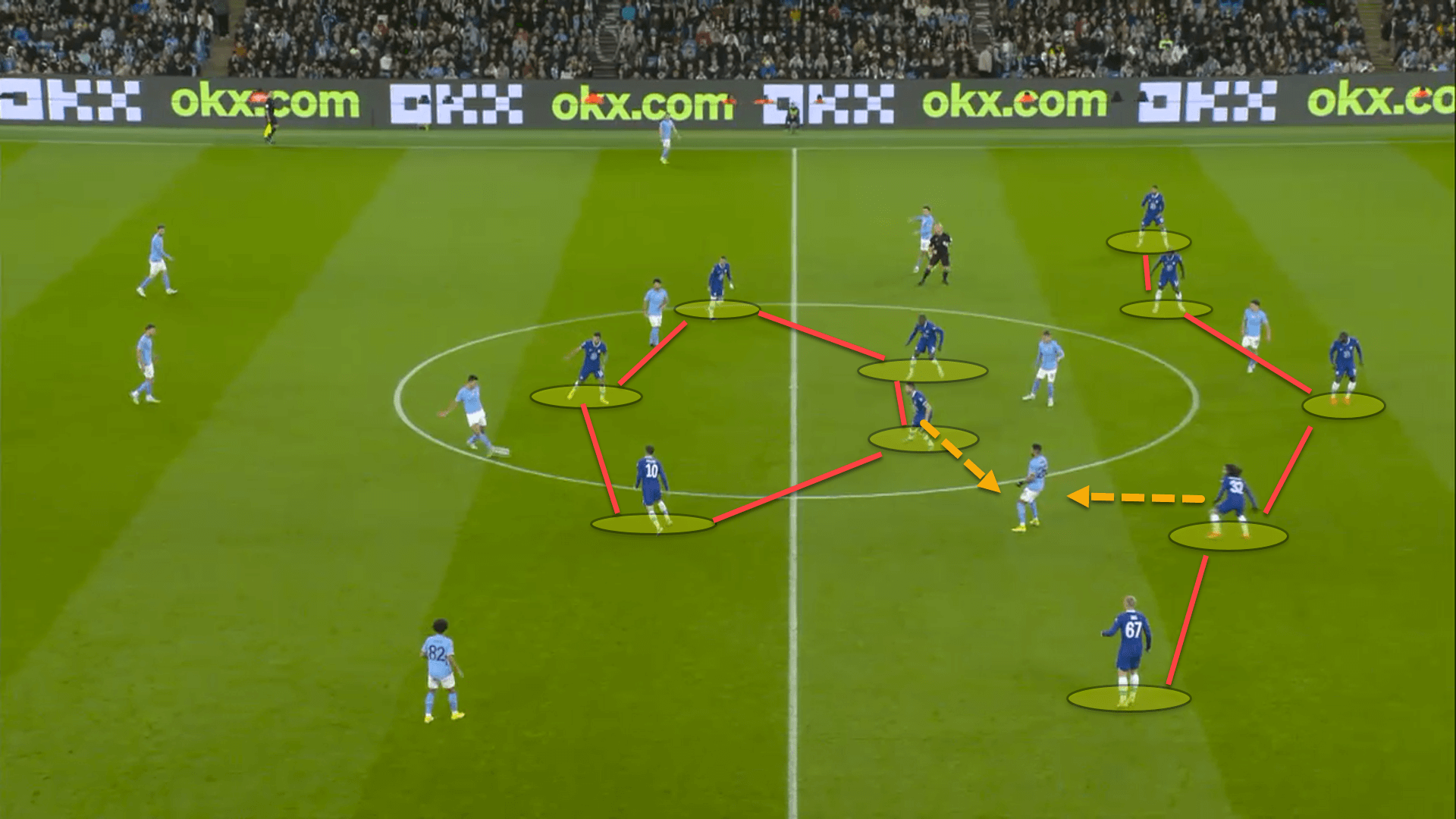
A more conservative approach is needed by Chelsea in this cup clash if they are to stop City from carving them open high up the pitch and exploiting an exposed backline.
Potter must ensure that his side are compact in the middle of the pitch and are secure between the lines so that Guardiola’s men cannot penetrate them with ease.
Against Nottingham Forest last weekend, it was far too easy for the relegation candidates to play inside the Chelsea 4-4-2 mid-block as Steve Cooper’s players were able to create numerous opportunities.
Players were pressing with little regard for what was behind him and applying cover shadows seemed alien to some of the Chelsea boys.
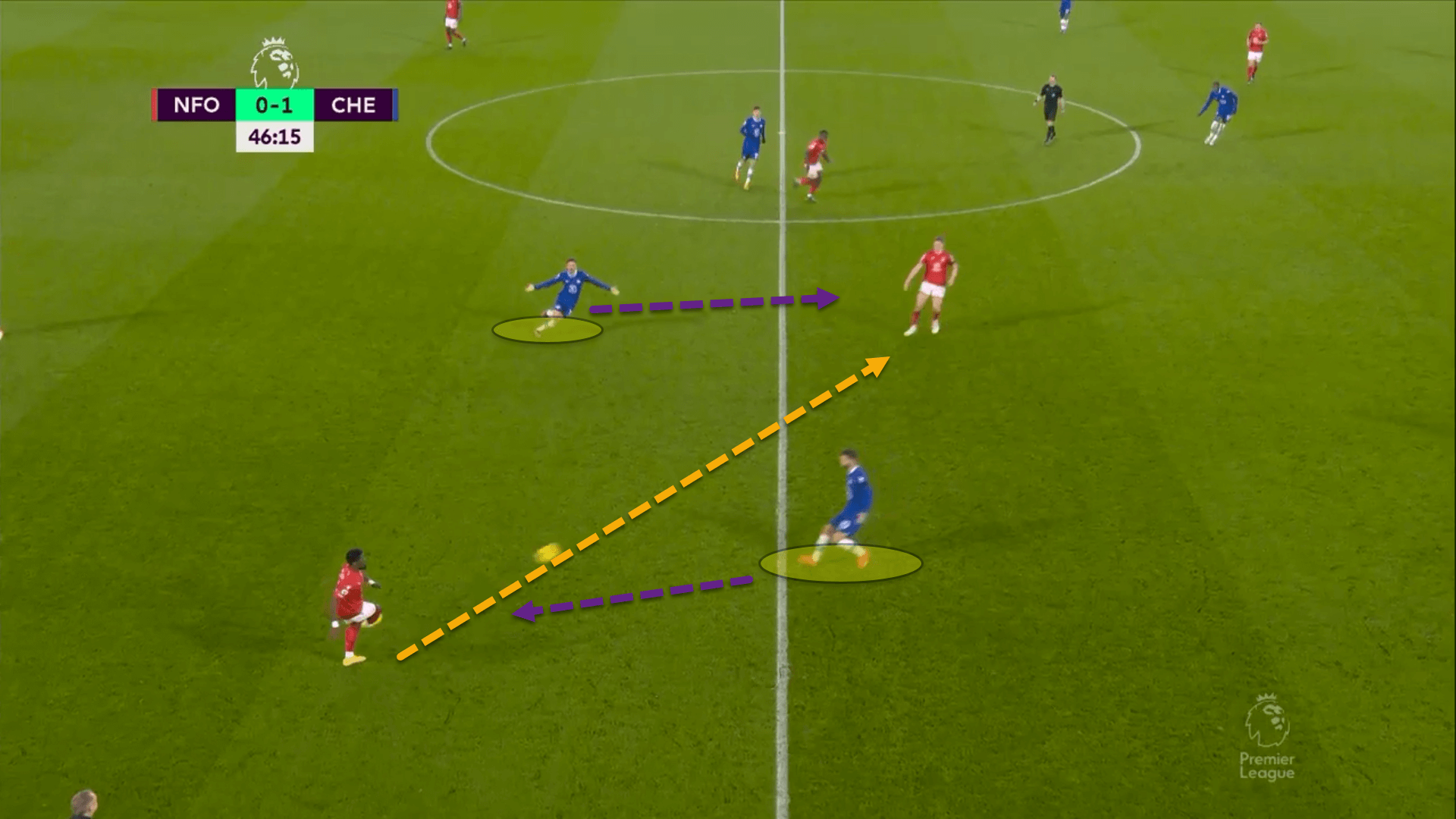
Here, Pulisic stepped forward to press Serge Aurier, who was in possession, without angling his run to block off the passing lane on the inside. Mason Mount is visibly annoyed at his colleague for such a poor lapse of concentration as Aurier simply played it inside and Forest could turn and play forward.
How can Chelsea exploit City?
There are two simple ways that Potter can look to gain an edge on his counterpart in the opposition dugout. City are an exceptional team that are solid in every phase. However, no side are perfect. Guardiola’s team have flaws which is why their form has been quite inconsistent this season.
One of these flaws is playing a high line. This isn’t necessarily an issue, but it does mean that opponents can look to hit balls in behind their backline to runners.
Koulibaly’s passing range could be the key for Chelsea to find these attacking players making runs towards the goal. The Senegalese defender has a wonderful diagonal pass and constantly attempts these types of passes over the top if a team are proving difficult to break down on the deck.
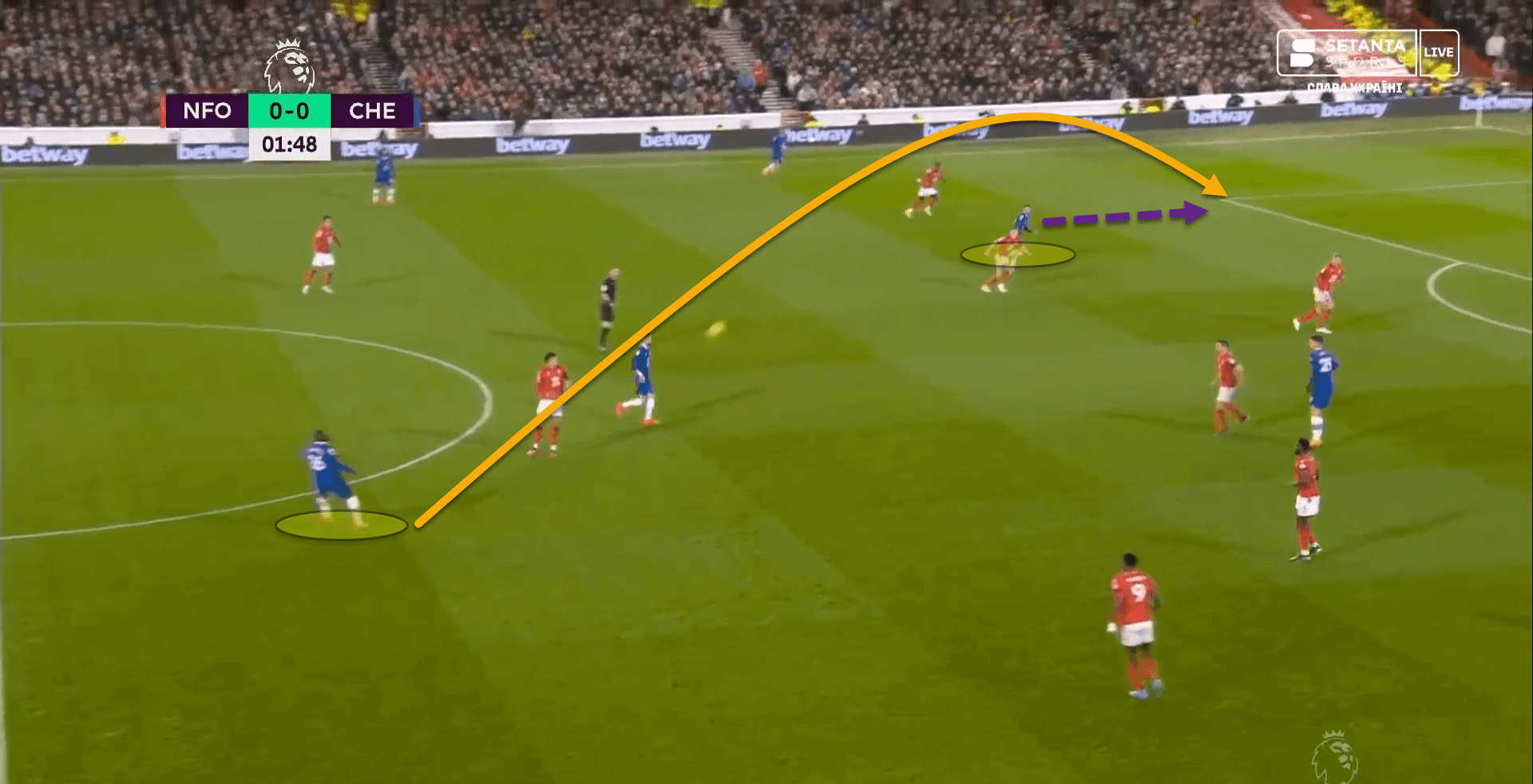
Within two minutes against Notts Forest, the centre-back lofted a sumptuous ball over the hosts’ defence into the feet of Mount. Unfortunately, Mount’s strike went over the bar, but it was still a wonderful opportunity for the visitors.
With fast attackers such as Kai Havertz, Mount, Pierre-Emerick Aubameyang, Pulisic and Sterling in Chelsea’s ranks, Potter will certainly look to use Koulibaly’s pinpoint passing to exploit the City high line.
Secondly, if last Saturday’s 1-1 draw with Everton proved anything, it’s that, at the right moment, City can be caught on the break.
Guardiola likes to structure his positional attacks with a 3-2 base. One fullback tucks inside as a third centre-back while the other moves behind the opposition’s first line of pressure alongside Rodri and forms a temporary double-pivot.
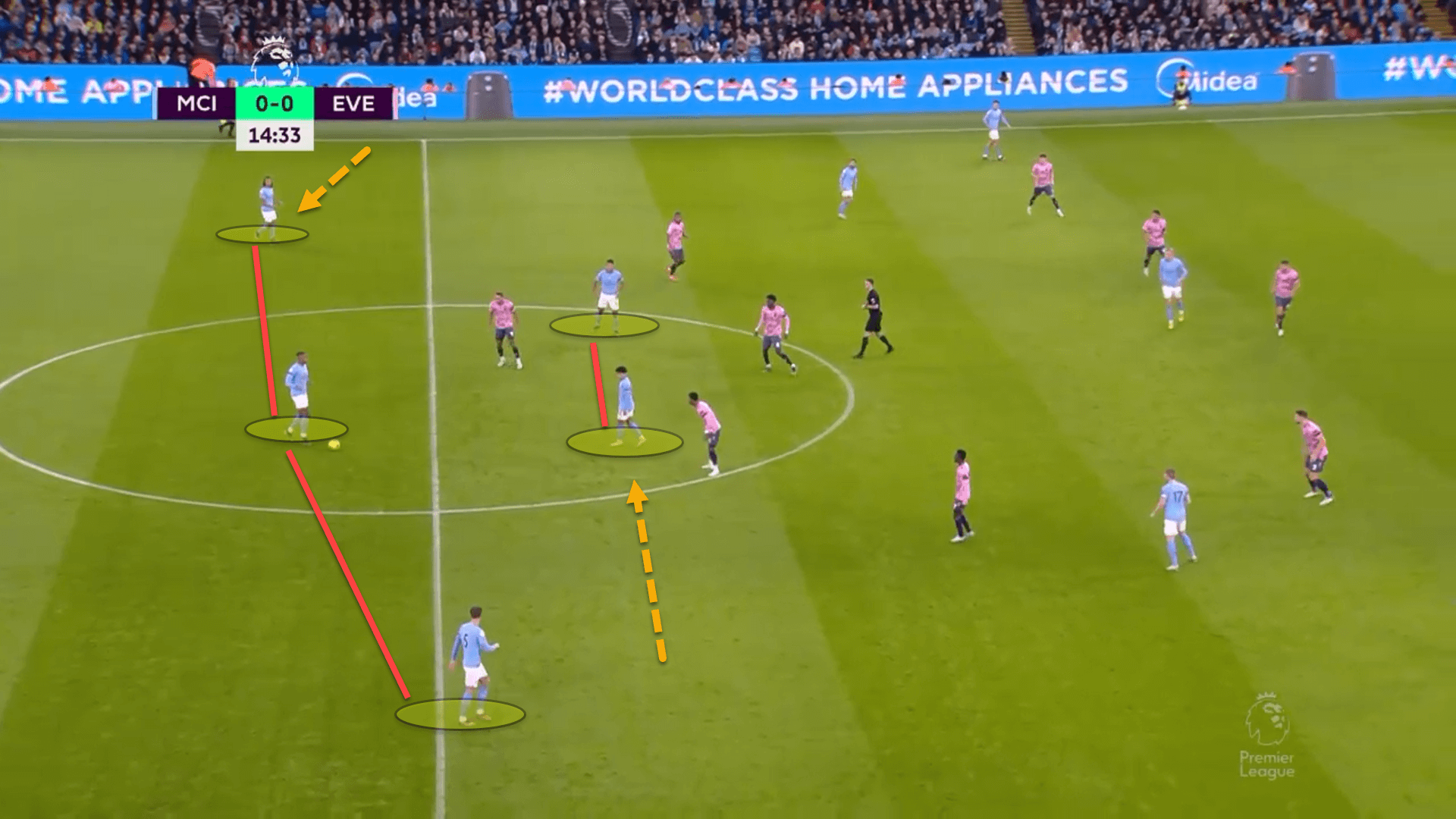
This allows Pep’s team to play short, neat passes among the backline and the temporary double-pivot before trying to reach the attacking players between the lines.
The 3-2 shape at the base also means that, upon turnover of possession, City have players in close proximity so that they can counterpress in the middle of the pitch with numbers.
On the flip side, if the central counterpressing is broken, opponents can play down the sides where City’s weaknesses are. Everton scored their only goal of the game, after registering a total xG of just 0.08, by winning the ball back and transitioning down the left flank with Demarai Gray.
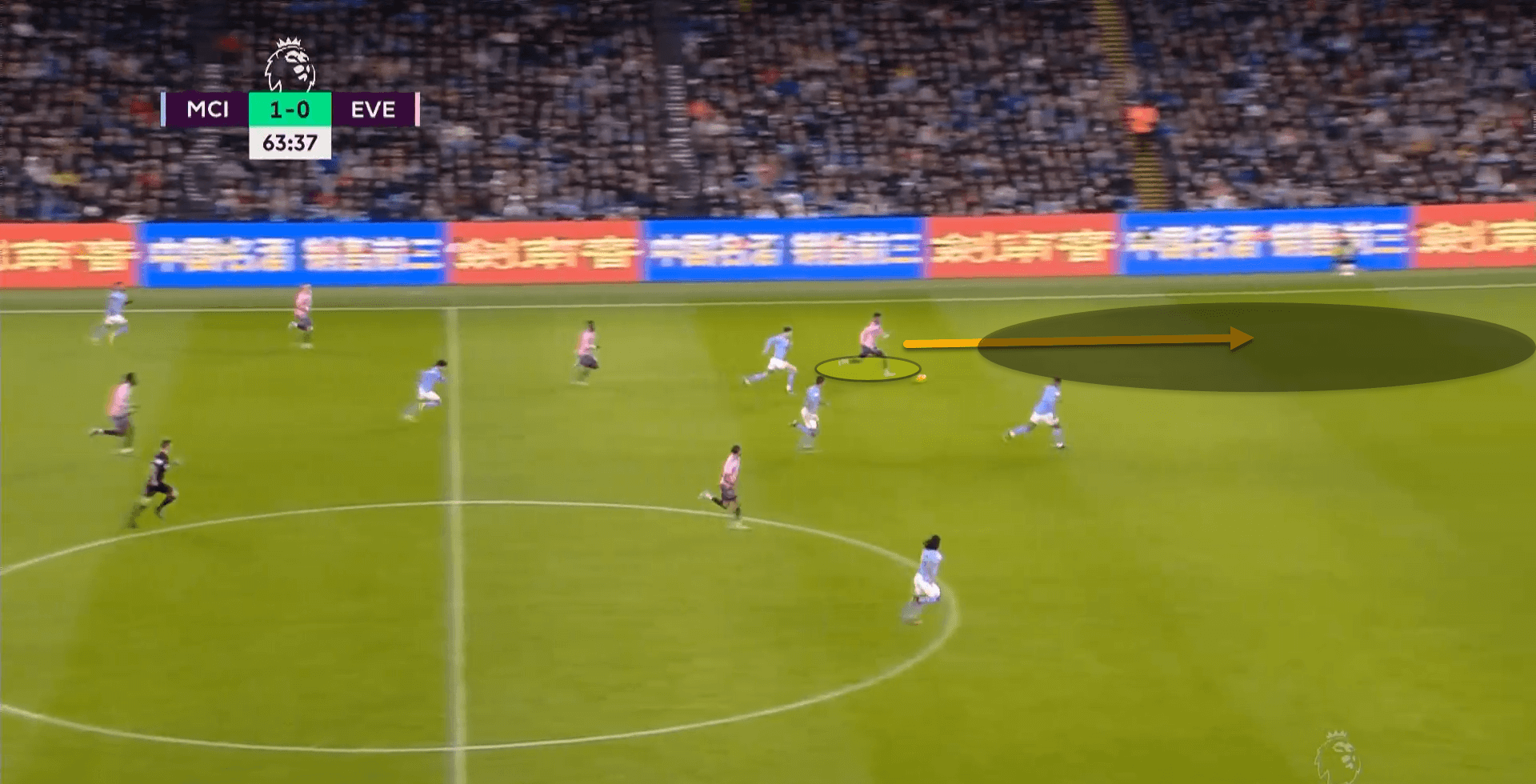
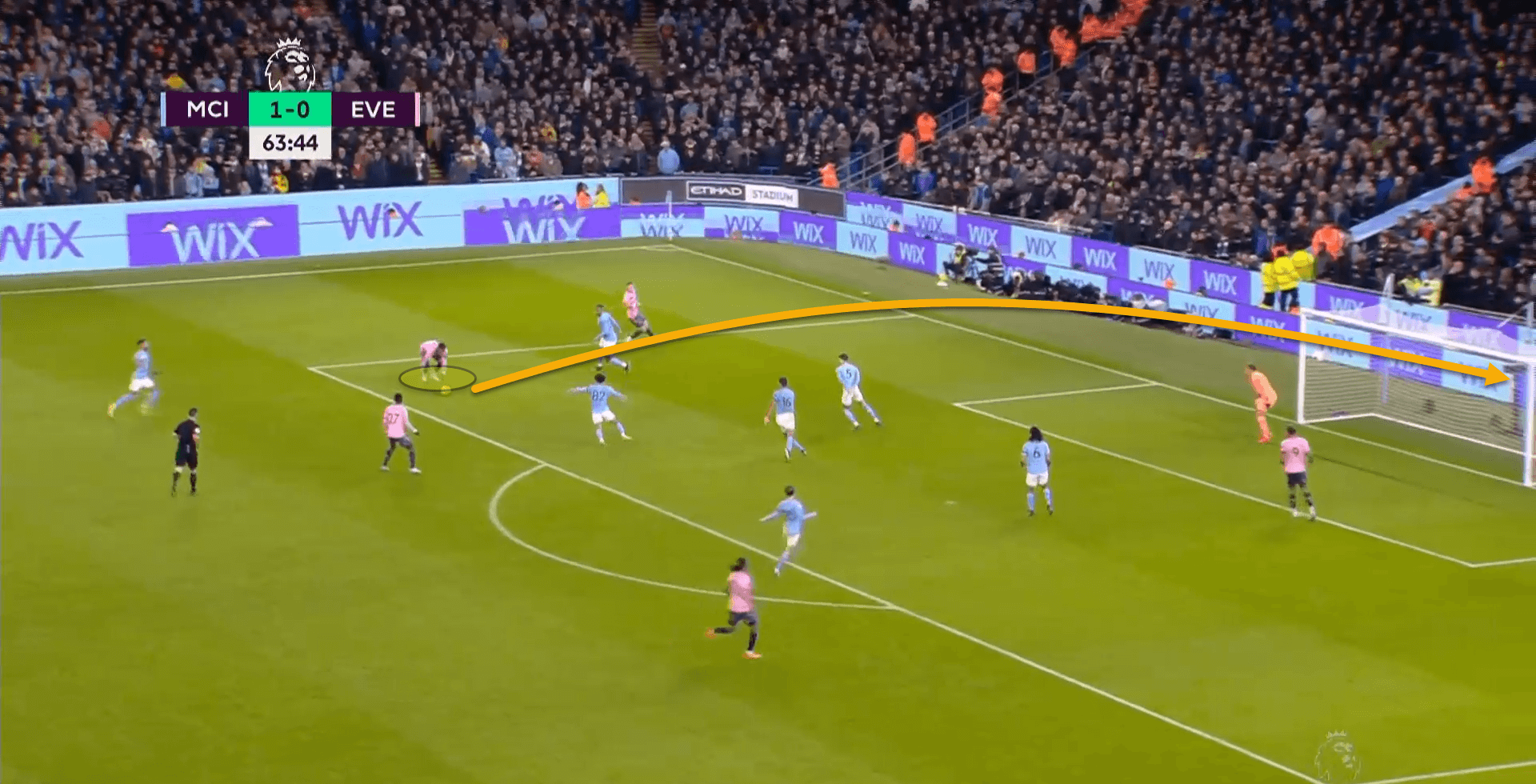
Manchester City can be exploited on the flanks due to their narrow build-up base with little wide protection and so Chelsea should look to take advantage of this by using their rapid attackers.
Unfortunately, Potter’s side will need to take their chances too. Chelsea are underperforming their xG this season, having scored just 20 goals in 17 matches, including merely 18 non-penalty goals.
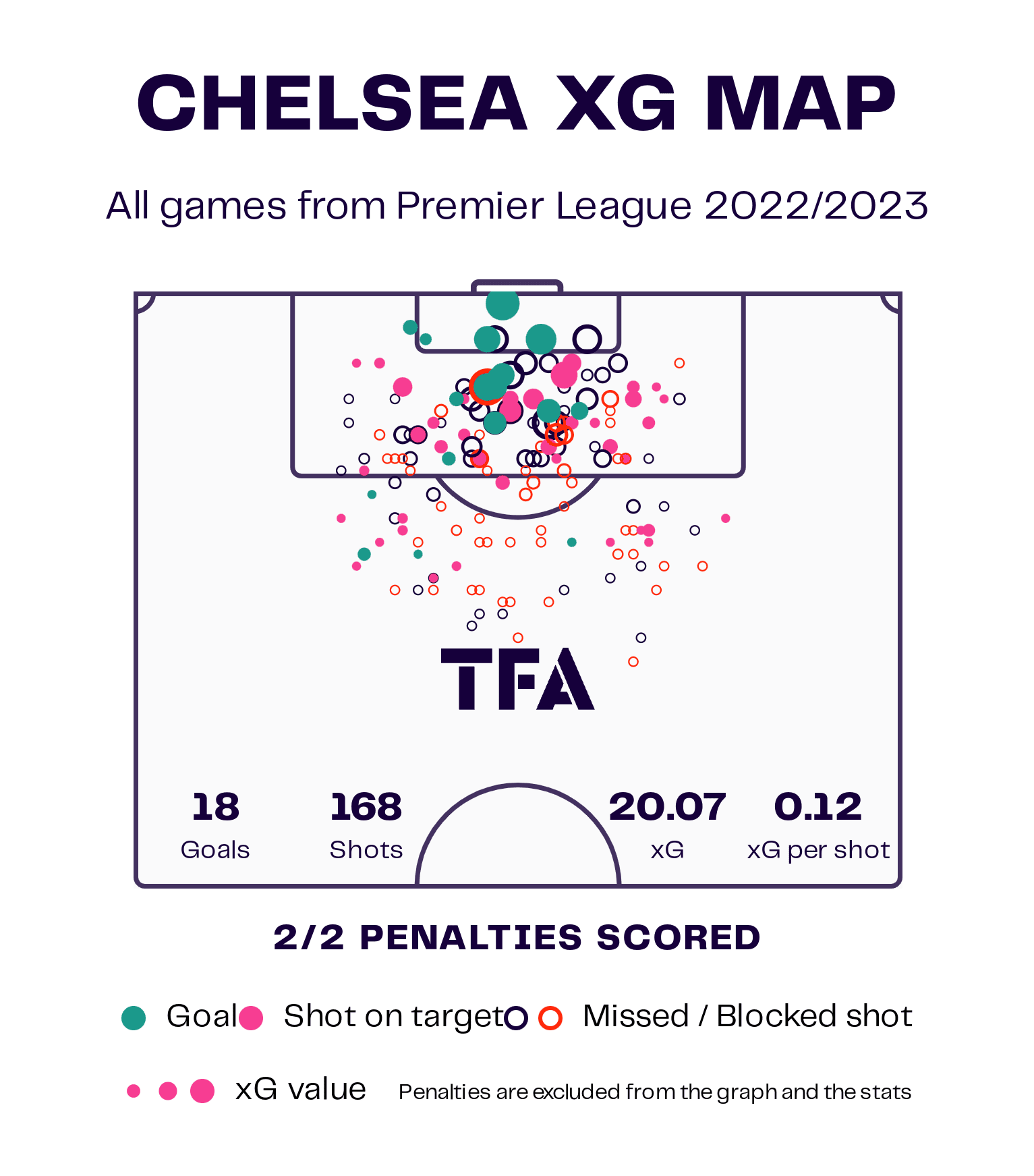
Chelsea’s opportunities will be few and far between against Manchester City this weekend, but whether the eight-time winners can take their chances when they arise will be the deciding factor of whether or not the London giants will progress to the next round, as can be seen from the analysis of the side’s xG map.
Conclusion
Man City are undoubtedly the favourites heading into Sunday’s clash at the Etihad Stadium. Guardiola’s side have already beaten Chelsea twice this season and will be looking for a three-peat this weekend.
Chelsea haven’t looked like themselves since Potter took over. The former Brighton boss is certainly an excellent manager but may need to compromise on his principles by being more pragmatic than usual if the Blues are to reach the fourth round of the historic competition.
While City are still battling on all fronts, there is a vulnerability to the team that wasn’t there in the previous two campaigns. If Chelsea can keep their potent attack at bay, which includes goal-machine Haaland, while taking their chances at the other end, Potter could pull off one of the best victories of his managerial career to date.






Comments